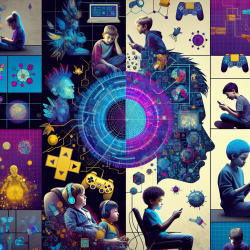As practitioners dedicated to improving the mental health outcomes of children, it is crucial to stay informed about the latest research and apply data-driven insights to clinical practice. A recent review titled "Hallucinations in Children and Adolescents: An Updated Review and Practical Recommendations for Clinicians" provides valuable information that can help clinicians enhance their skills and better support young patients experiencing hallucinations.
Understanding the Continuum of Hallucinatory Experiences
The research highlights that hallucinations in children and adolescents occur on a continuum, ranging from benign and transient phenomena to symptoms indicative of severe psychopathology. It is essential to recognize that while many hallucinations in young populations are temporary, they can still cause significant distress and impairment. This understanding can guide clinicians in identifying which cases require more intensive intervention.
Assessment Tools for Accurate Diagnosis
One of the critical takeaways from the review is the importance of using validated assessment tools tailored for children and adolescents. The study presents several instruments designed to measure the phenomenology of hallucinations, such as the Multisensory Hallucinations Scale for Children (MHASC) and the Auditory Vocal Hallucination Rating Scale Questionnaire (AVHRS-Q). Utilizing these tools can help clinicians accurately assess the presence and characteristics of hallucinations, ensuring appropriate and timely interventions.
Therapeutic Strategies and Clinical Issues
The review also discusses various therapeutic strategies that can be employed to support children and adolescents experiencing hallucinations. Cognitive-behavioral therapy (CBT) tailored for young populations has shown promise in reducing distress and improving clinical outcomes. Additionally, the study emphasizes the importance of a holistic and destigmatizing approach to treatment, addressing the broader psychosocial context of the child’s experiences.
Encouraging Further Research
While the review provides a comprehensive overview of current knowledge, it also identifies gaps in the research that need to be addressed. Clinicians are encouraged to contribute to this growing body of evidence by conducting further studies and sharing their findings. This collaborative effort will enhance our understanding of hallucinations in children and adolescents and lead to more effective interventions.
Conclusion
By integrating the insights from this research into clinical practice, practitioners can better support children and adolescents experiencing hallucinations. Utilizing validated assessment tools, employing evidence-based therapeutic strategies, and contributing to ongoing research are essential steps in creating positive outcomes for young patients.
To read the original research paper, please follow this link: Hallucinations in Children and Adolescents: An Updated Review and Practical Recommendations for Clinicians.










